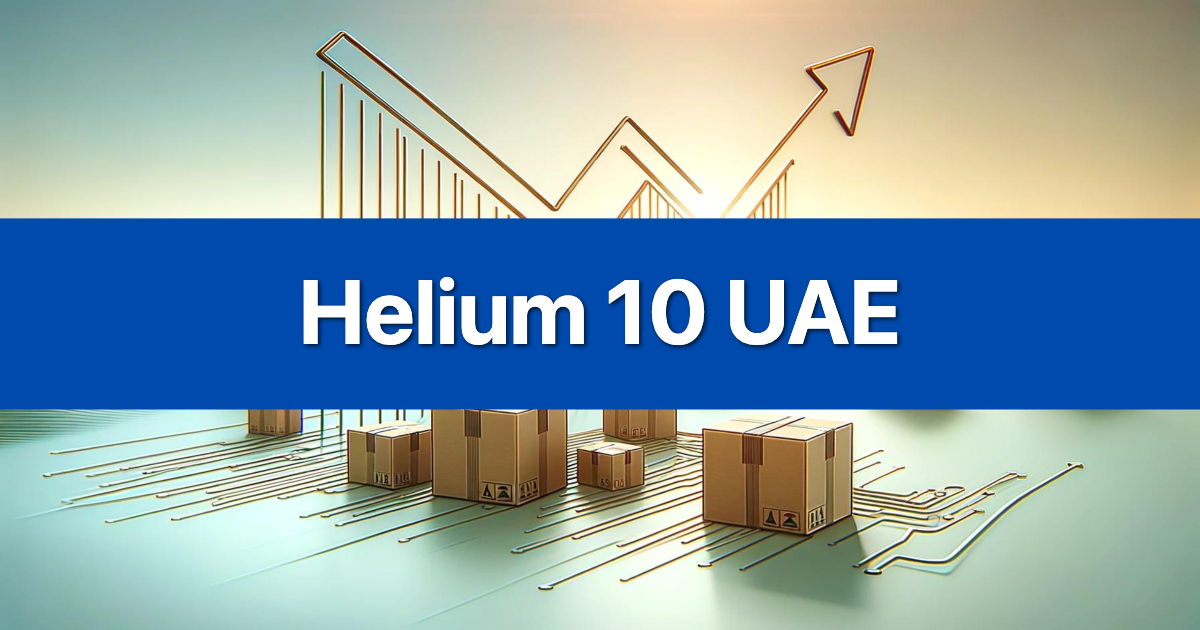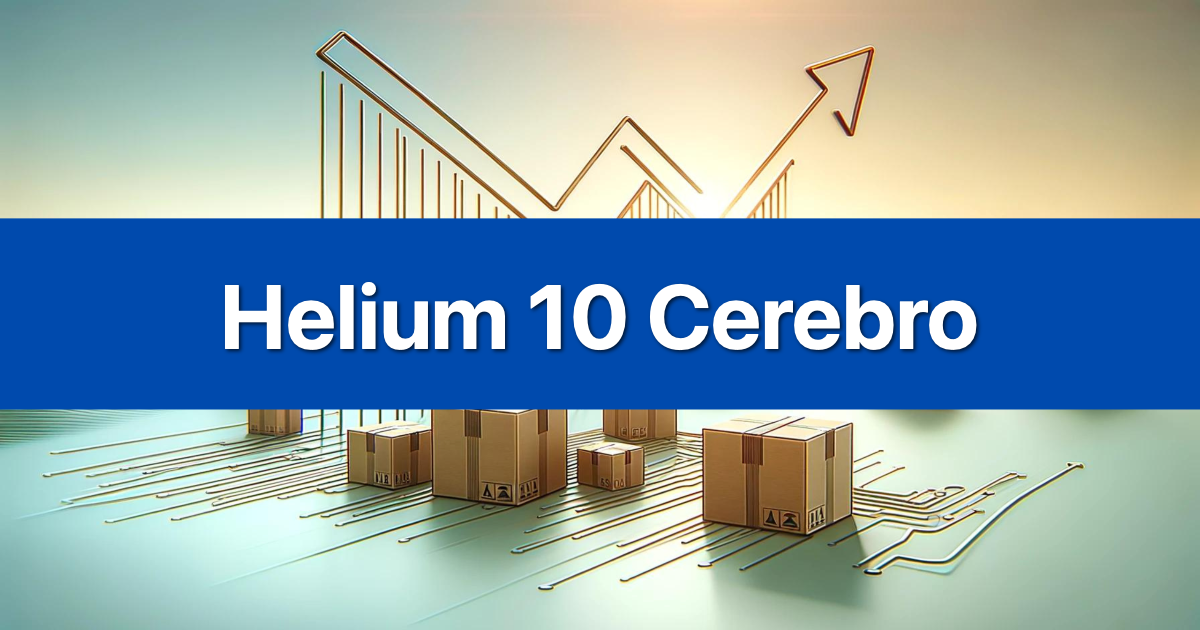Spotting seasonal products can make or break your Amazon business. That’s where Helium 10’s Trendster comes in – a product research tool that helps you research products and plan for future sales by pulling past sales data. Whether you’re looking to avoid Christmas-only items or capitalize on year-round sellers, Trendster gives you the visual data you need to make smart sourcing decisions.
Ready to stop guessing about product seasonality? Start your free Helium 10 trial today and get instant access to Trendster on any plan – including their completely free tier.
What is Helium 10 Trendster?
Trendster helps you quickly and easily check the seasonal trends for products you’re thinking about sourcing. Enter any product ASIN and get back visual results in seconds. See how prices and sales have fluctuated over a given period of time. Think of it as your crystal ball for Amazon product performance.
Here’s the kicker: Trendster also pulls Google search volume data on associated keywords, if you want to add this component to your analysis. You’re not just seeing Amazon data – you’re getting the full picture of consumer interest across the web.
Tracking Product Seasonality
Many consumer products are marketed and sold seasonally. For example, few people purchase winter gloves in July or summer lawn games in January. Trendster shows exactly when products hit their peak selling seasons and when they flatline.
The tool displays sales rank patterns over time – and remember, lower sales rank means better performance. If you see a product’s sales rank dropping dramatically every December but spiking back up in February, you’re looking at a Christmas seasonal item. Perfect for planning inventory cycles.
Analyzing Sales Rank & Price History
Each ASIN search pulls up the product name, main image, average customer rating, and the number of customer reviews. Below these details, it produces a graph with the sales price and sales rank over time.
Price fluctuations tell their own story. Products that spike in price during certain months often indicate high demand periods – or supply shortages. By tracking both metrics together, you can spot opportunities where competitors raise prices during peak seasons, leaving room for competitive pricing strategies.
Understanding Keyword Demand Over Time
Trendster’s second feature, the option to add keywords to the search, allows you to determine whether buyers are also searching Google for a particular type of product. There are four fields, and you can either type in the same search terms to show a side-by-side comparison with each product, or you can type in different terms and pull up four different graphs. The new second set of graphs on the right side of the window displays data from Google searches.
This dual-graph approach is genius. You can compare Amazon sales performance with Google search interest to validate demand patterns. If Google Trends shows high search volume but Amazon sales rank stays poor, it might indicate market saturation or listing issues.
Key Benefits of Using Trendster
Identify Profitable Seasonal Products
Instead of avoiding seasonal products entirely, Trendster helps you embrace them strategically. Whether you want to know the time of year a product sells best, or whether a specific product’s sales are generally trending up or down over time, use Trendster to gather the facts needed to focus your future product line.
Some seasonal products can be goldmines – think pool accessories in summer or fitness equipment in January. The key is knowing exactly when to launch, when to stock up, and when to liquidate inventory. For more product research strategies, check out our comprehensive Helium 10 Magnet guide.
Improve Inventory Planning
Nothing kills profits faster than ordering 5,000 units of something that only sells in December. Trendster gives you the most efficient way to review past sales of various products on the market and to help you anticipate future sales. You can also research the products you sell via Amazon to see their sales history, and to help you plan for a more efficient sales cycle.
Use historical data to time your purchase orders months in advance. If a product typically sees demand spike in March, you can place orders in December to account for manufacturing and shipping lead times.
Compare Potential Product Opportunities
You can search up to four ASINs simultaneously, making product comparison straightforward. This feature shines when you’re choosing between similar products in the same niche. Maybe Product A has better overall sales, but Product B shows more consistent year-round performance – exactly the kind of insight that drives smart product selection.
Want to dive deeper into product comparison? Our Helium 10 vs Jungle Scout comparison shows how Trendster stacks up against competitor tools.
How to Use Helium 10 Trendster
Finding Products & Keywords to Analyze
Trendster is a product research tool, so it needs specific products to begin a search. Primarily, it searches using existing ASINs. Typically, sellers will use Trendster to search for products based on a specific event, season, or theme.
Start by collecting ASINs from products you’re considering. You can find these on any Amazon product page – they’re the 10-character codes starting with B0. Helium 10 allows you to search many of Amazon’s marketplaces in Trendster. To change which market you search, use the drop-down menu in the upper-right corner.
Pro tip: Use Helium 10’s Chrome Extension first to identify promising products, then plug their ASINs into Trendster for seasonality analysis.
Reading the Trend Graphs
Below these details, it produces a graph with the sales price and sales rank over time. At the top of the graph, you can select the timeframe you want to display. Available timeframes typically include 24 hours, 7 days, 30 days, 90 days, and all-time data.
For seasonality analysis, always start with the longest timeframe available – usually one year or all-time. Shorter periods can be misleading because they might miss critical seasonal patterns. Look for recurring spikes or dips that happen around the same time each year.
Using Google Trends Data
The new second set of graphs on the right side of the window displays data from Google searches. At the top of the graph, you can select the timeframe you want to display. This Google Trends integration sets Trendster apart from basic sales rank tools.
When Google search interest peaks but Amazon sales stay flat, it often signals opportunity. Maybe the market is undersupplied, or existing listings aren’t capturing the search demand effectively. Conversely, if Amazon sales spike without corresponding Google interest, you might be looking at a fad that’s already peaked.
Trendster Pricing: Is It Free?
Access with Helium 10 Free Plan
Here’s the best part: Amazon Trending Products (formerly known as Trendster), Helium 10’s secret weapon. This free, intuitive tool bridges the gap between Amazon BSR trends and Google Trends, unveiling a wealth of information to inform your selling strategy.
Yes, you read that right – Trendster is completely free with Helium 10’s free plan. No credit card required, no trial limitations. You can start analyzing product trends immediately after signing up.
Included in Helium 10 Paid Subscriptions
Paid Helium 10 subscriptions can cost anywhere from $79 to $279 a month through the all-in-one Helium 10 platform. But since Trendster is free, you’re not paying extra for this tool regardless of which plan you choose.
Paid plans unlock additional features across Helium 10’s suite, but Trendster functionality remains consistent. For detailed pricing breakdowns, check our complete Helium 10 pricing guide and grab our exclusive Helium 10 discount codes.
Trendster vs. Google Trends for Amazon Sellers
While Google Trends shows search interest over time, it doesn’t reveal Amazon-specific sales data. Amazon Trending Products (formerly known as Trendster), Helium 10’s secret weapon. This free, intuitive tool bridges the gap between Amazon BSR trends and Google Trends, unveiling a wealth of information to inform your selling strategy.
Google Trends tells you what people are searching for; Trendster tells you what they’re actually buying on Amazon. That’s the crucial difference. A product might trend on Google without translating to Amazon sales, or vice versa. Trendster gives you both datasets in one interface.
The combined view helps validate product opportunities. If both Google search interest and Amazon sales show similar seasonal patterns, you can be confident about the product’s cyclical nature. Mismatched patterns often reveal market inefficiencies worth investigating.
What Are Trendster’s Limitations?
Like any tool, Trendster isn’t perfect. You can only analyze four ASINs simultaneously, which might feel restrictive when comparing larger product sets. The interface also lacks advanced filtering options – you can’t easily isolate specific date ranges or set custom parameters.
Another limitation: Trendster shows trends but doesn’t predict future performance. Historical patterns don’t guarantee future results, especially in rapidly changing markets. Use the data as one input in your decision-making process, not as gospel truth.
The tool also depends on Amazon’s data availability. Newer products or those with limited sales history might not show meaningful trend patterns. For products launched within the past year, the seasonal data simply isn’t there yet.
Who Should Use Helium 10 Trendster?
New Amazon sellers benefit most from Trendster because it helps avoid costly seasonal mistakes. Before committing to a product, you can see exactly how it performs throughout the year. This prevents the classic rookie error of launching Christmas products in January.
Experienced sellers use Trendster for portfolio planning. If you already have several seasonal products, you can use trend data to balance your inventory across different peak periods. This smooths out cash flow and reduces storage costs.
Private label sellers find Trendster invaluable for timing product launches. Instead of guessing when to launch a new product, you can see when similar products historically perform best. Launch too early or too late, and you’ll miss the seasonal wave entirely.
For accuracy insights across all Helium 10 tools including Trendster, read our detailed analysis on whether Helium 10 is accurate.
Outro
Product seasonality can make the difference between profit and loss on Amazon. Helium 10’s Trendster can help you research products and plan for future sales by pulling past sales data. Whether you want to know the time of year a product sells best, or whether a specific product’s sales are generally trending up or down over time, use Trendster to gather the facts needed to focus your future product line.
The best part? It’s completely free. While other sellers guess about product timing, you’ll have hard data showing exactly when products peak and when they crash. Combined with Google Trends data, Trendster gives you a complete picture of market demand patterns.
Don’t let seasonal surprises kill your Amazon business. Start using Helium 10 Trendster today and make data-driven product decisions. Your future self will thank you when you’re not stuck with 3,000 units of Christmas ornaments in February.
Want to compare your options? Check out our guides on Helium 10 Starter vs Platinum plans and dive deep into the Helium 10 Platinum features. Plus, don’t miss our Helium 10 vs Keepa comparison to see how these trend analysis tools stack up.




